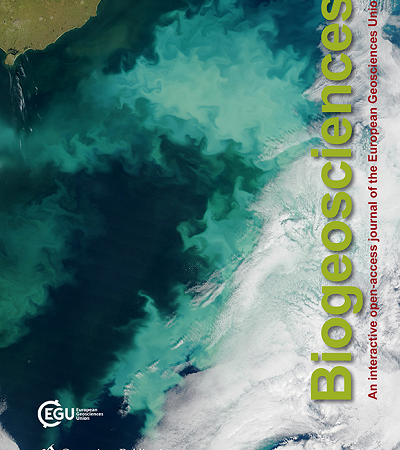
Few fiel d studies examine greenhouse gas (GHG) emissions from African agricultural systems resulting in high uncertainty for national inventories. We provide here the most comprehensive study in Africa to date, examining annual CO2, CH4 and N2O emissions from 59 plots, across different vegetation types, field types and land classes in western Kenya. The study area consists of a lowland area (approximately 1200 m a.s.l.) rising approximately 600 m to a highland plateau. Cumulative annual fluxes ranged from 2.8 to 15.0 Mg CO2-C ha−1, −6.0 to 2.4 kg CH4-C ha−1 and −0.1 to 1.8 kg N2O-N ha−1. Management intensity of the plots did not result in differences in annual fluxes for the GHGs measured (P = 0.46, 0.67 and 0.14 for CO2, N2O and CH4 respectively). The similar emissions were likely related to low fertilizer input rates (≤ 20 kg ha−1). Grazing plots had the highest CO2 fluxes (P = 0.005); treed plots were a larger CH4 sink than grazing plots (P = 0.05); while N2O emissions were similar across vegetation types (P = 0.59). This case study is likely representative for low fertilizer input, smallholder systems across sub-Saharan Africa, providing critical data for estimating regional or continental GHG inventories. Low crop yields, likely due to low inputs, resulted in high (up to 67 g N2O-N kg−1 aboveground N uptake) yield-scaled emissions. Improving crop production through intensification of agricultural production (i.e. water and nutrient management) may be an important tool to mitigate the impact of African agriculture on climate change.
d studies examine greenhouse gas (GHG) emissions from African agricultural systems resulting in high uncertainty for national inventories. We provide here the most comprehensive study in Africa to date, examining annual CO2, CH4 and N2O emissions from 59 plots, across different vegetation types, field types and land classes in western Kenya. The study area consists of a lowland area (approximately 1200 m a.s.l.) rising approximately 600 m to a highland plateau. Cumulative annual fluxes ranged from 2.8 to 15.0 Mg CO2-C ha−1, −6.0 to 2.4 kg CH4-C ha−1 and −0.1 to 1.8 kg N2O-N ha−1. Management intensity of the plots did not result in differences in annual fluxes for the GHGs measured (P = 0.46, 0.67 and 0.14 for CO2, N2O and CH4 respectively). The similar emissions were likely related to low fertilizer input rates (≤ 20 kg ha−1). Grazing plots had the highest CO2 fluxes (P = 0.005); treed plots were a larger CH4 sink than grazing plots (P = 0.05); while N2O emissions were similar across vegetation types (P = 0.59). This case study is likely representative for low fertilizer input, smallholder systems across sub-Saharan Africa, providing critical data for estimating regional or continental GHG inventories. Low crop yields, likely due to low inputs, resulted in high (up to 67 g N2O-N kg−1 aboveground N uptake) yield-scaled emissions. Improving crop production through intensification of agricultural production (i.e. water and nutrient management) may be an important tool to mitigate the impact of African agriculture on climate change.








